UNICEF
Mozambique, Zimbabwe

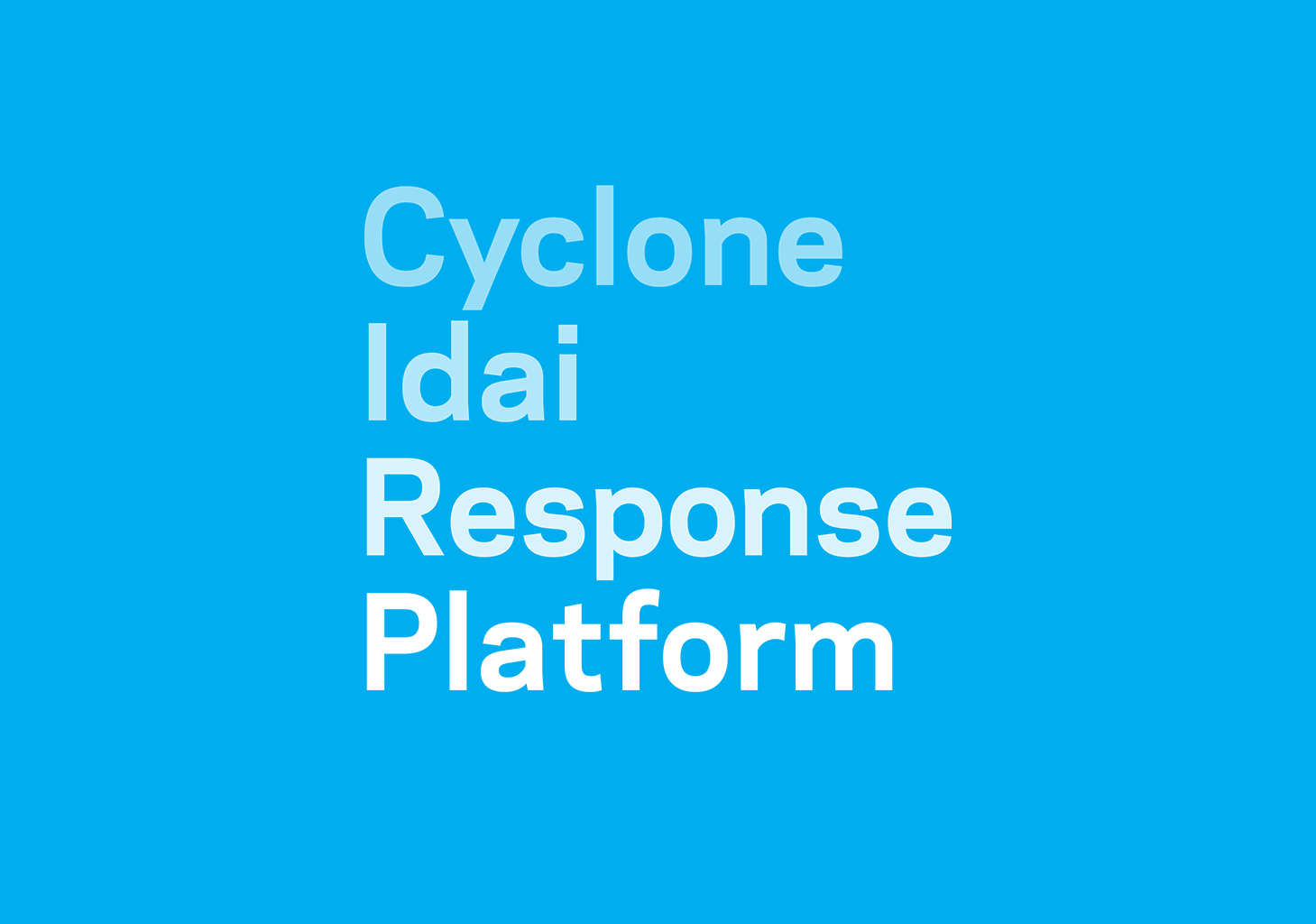
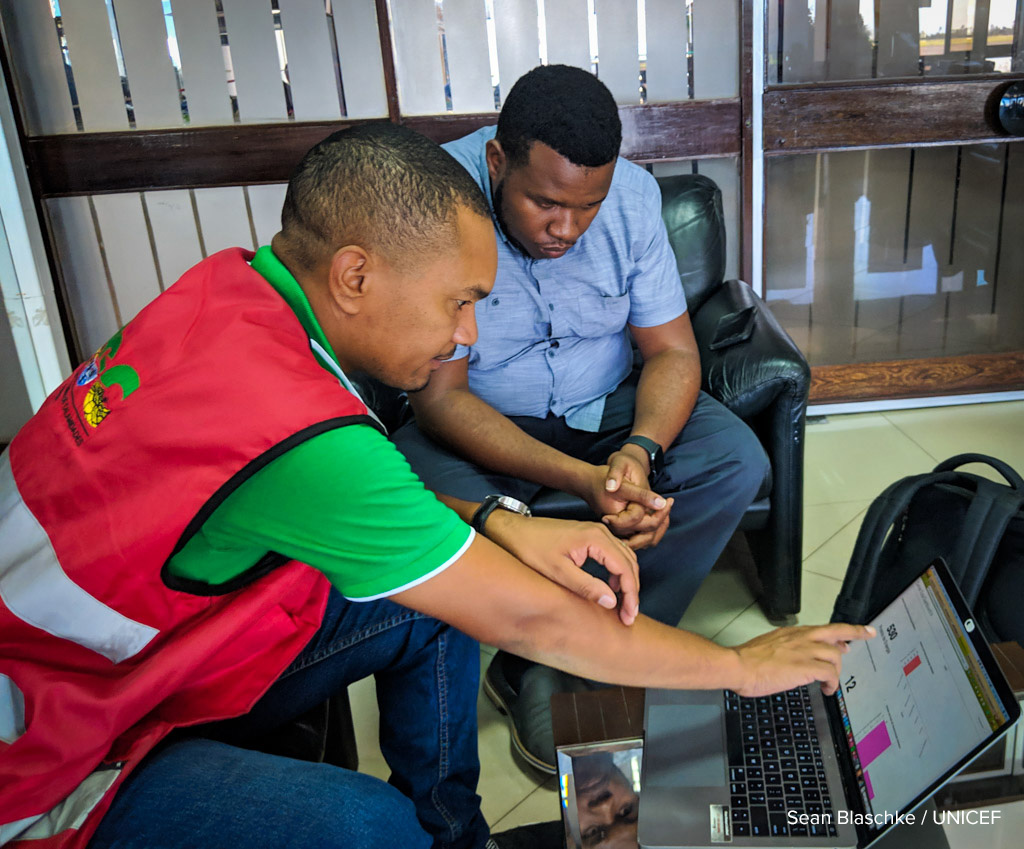
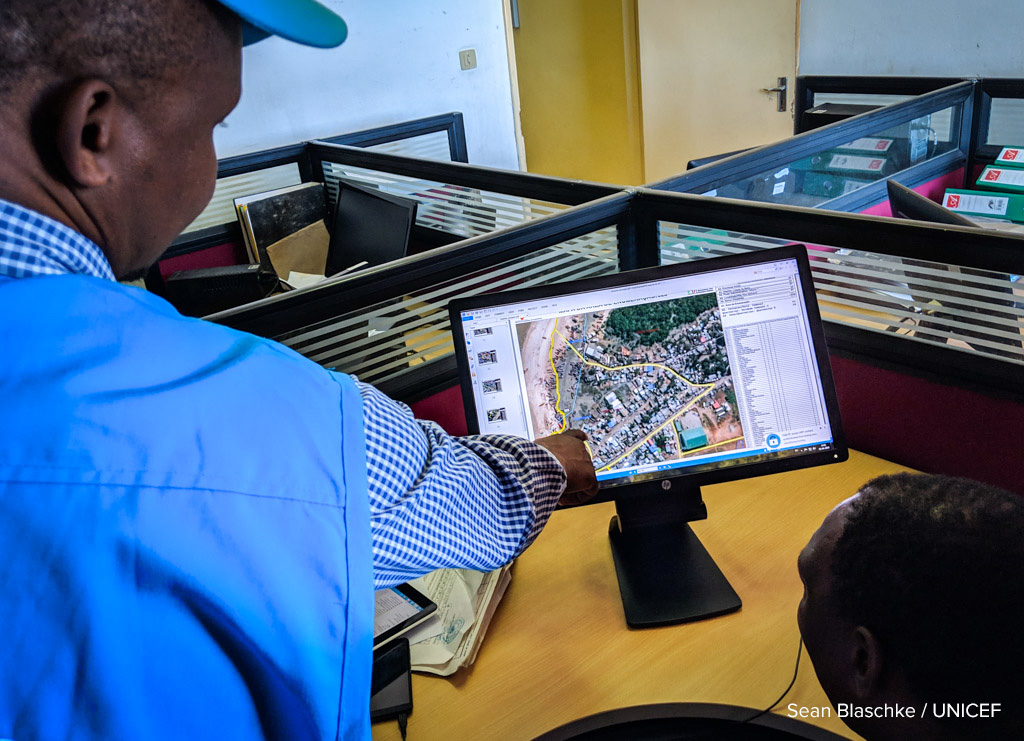
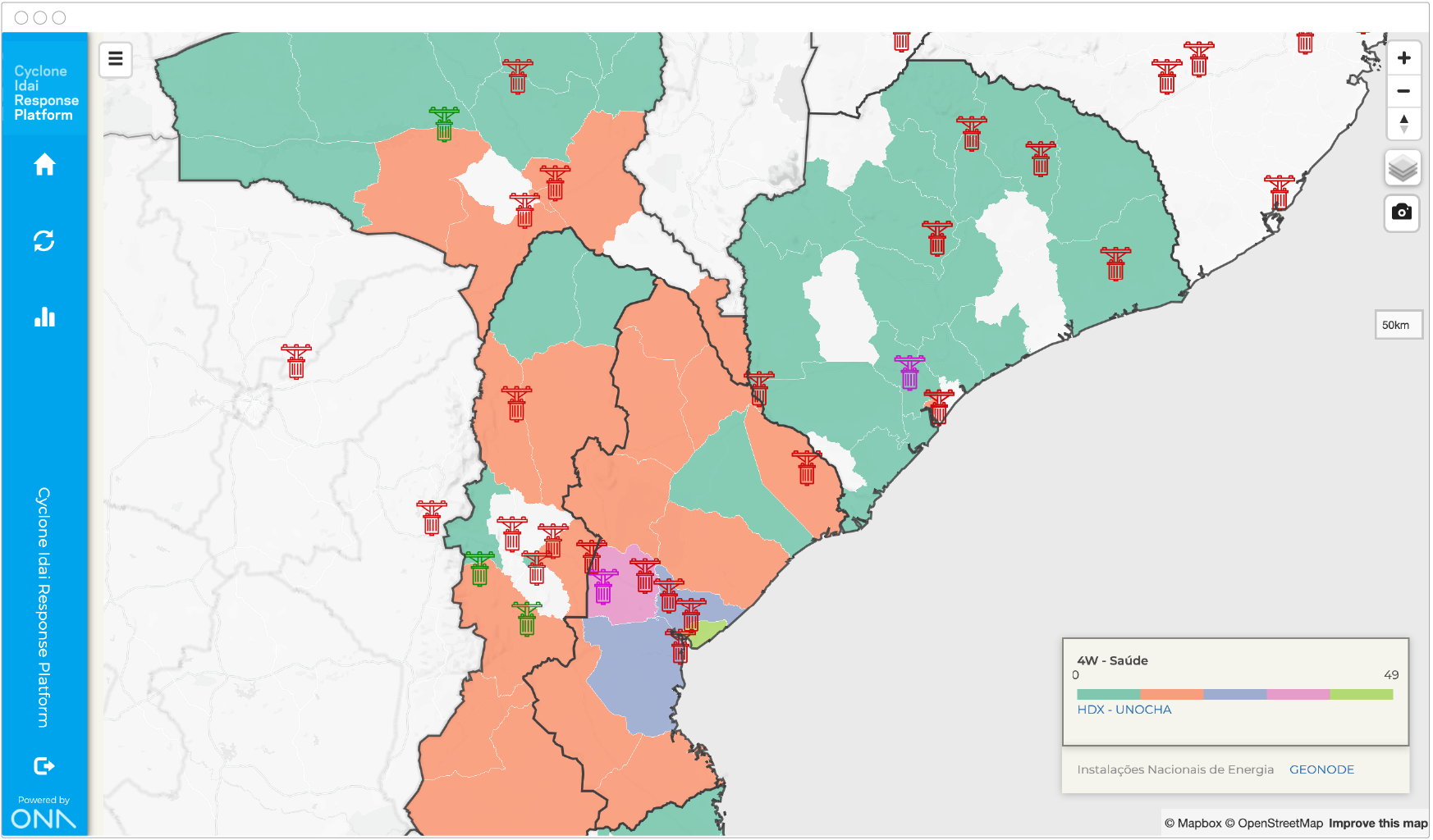
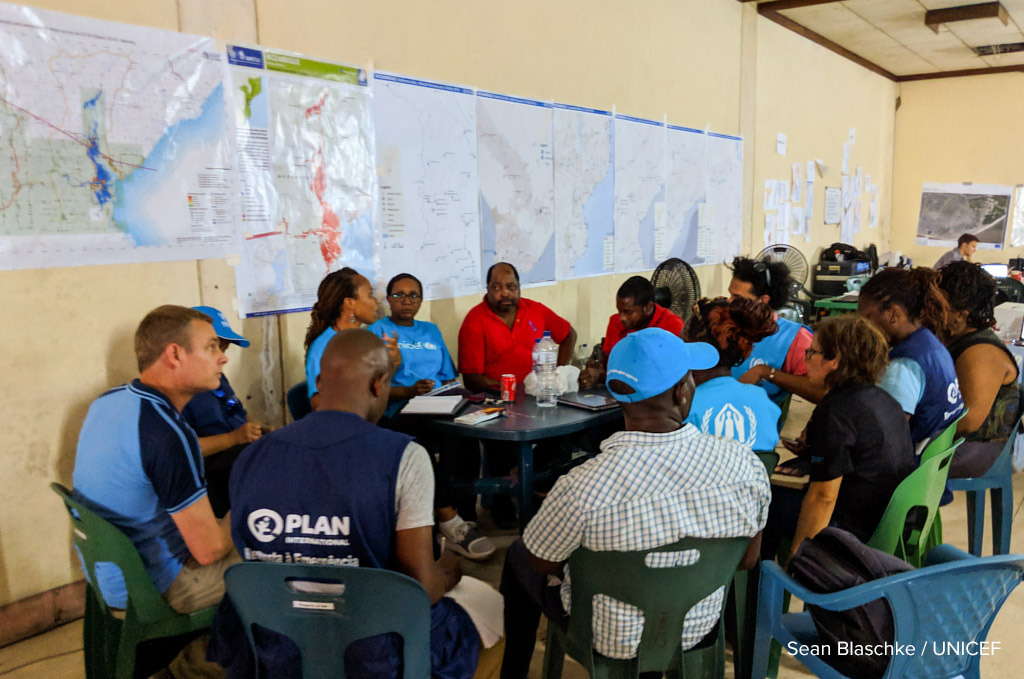





UNICEF
Mozambique, Zimbabwe

Aggregate multi-party, cross-region data to better inform local and national response planning capacity after a natural disaster.
In March 2019, Cyclone Idai hit Southeast Africa. Reportedly one of the deadliest tropical storms to hit the southern hemisphere, the cyclone pummeled Mozambique, Zimbabwe, and Malawi resulting in a humanitarian disaster throughout the region. Devastating winds up to 120kph, along with heavy rains, flooding, and landslides, left dozens of lives lost, thousands injured and a trail of property destroyed.
The governments of Mozambique, Malawi, and Zimbabwe, and the humanitarian community responded swiftly with Malawi and Zimbabwe declaring a state of emergency in the affected areas and the United Nations categorizing the emergency at Level 3 (L3). The coordinated response resulted in a host of governments, the UN, and other international humanitarian agencies sending emergency response teams to the affected areas.
Disaster relief organizations needed rapid and coherent responses amongst the different players in the region, specifically in the form of access to accurate and real-time data across many response activities. Disaggregated approaches to data collection and visualization created siloed information, which limited data sharing between partners and coordinating agencies, making them unable to cross-analyze information.
Serving as the humanitarian response cluster lead, UNICEF called on Ona to support the National Institute of Disaster Management in Mozambique (INGC) to help the region improve its preparedness for future events.
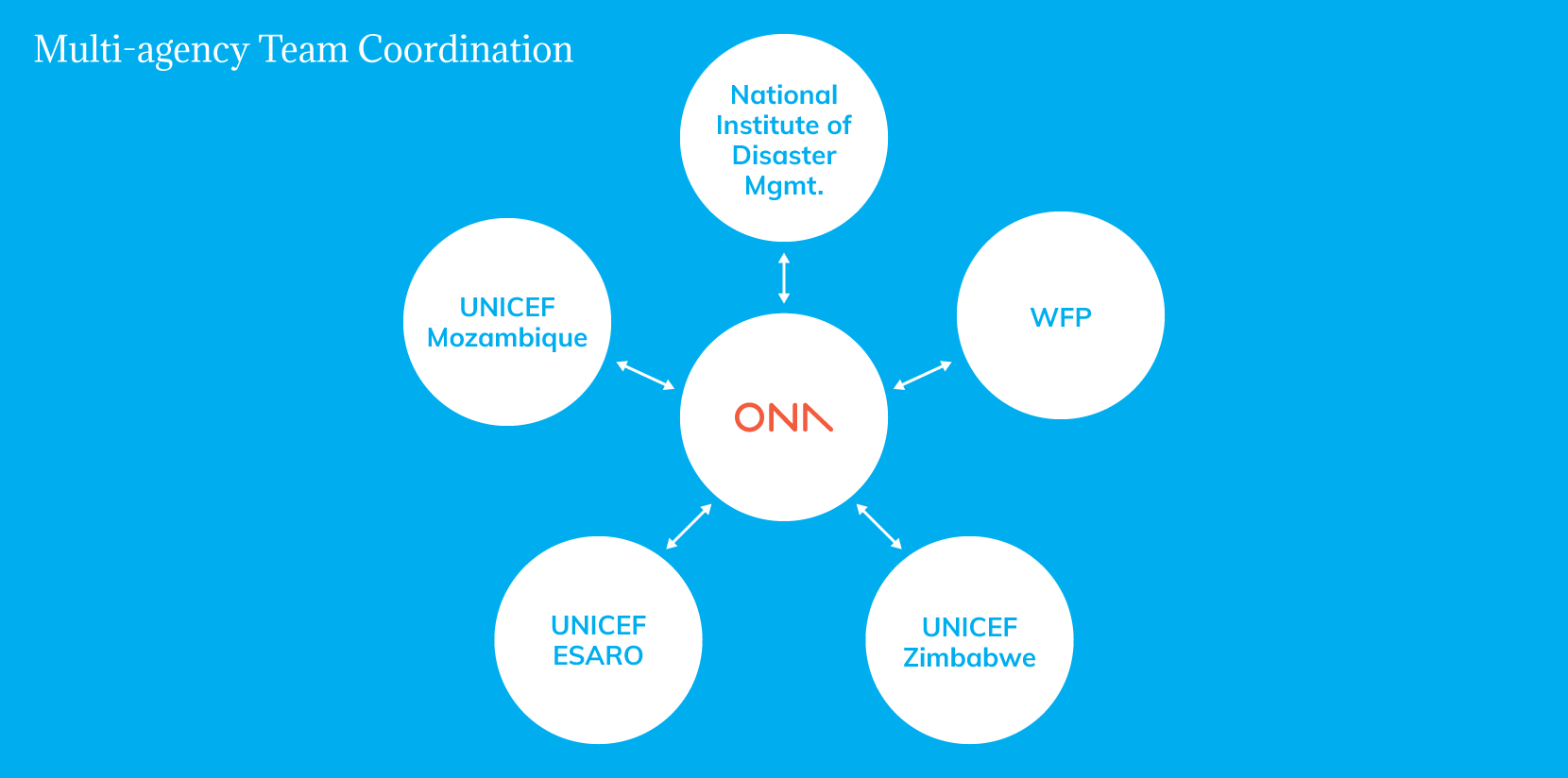
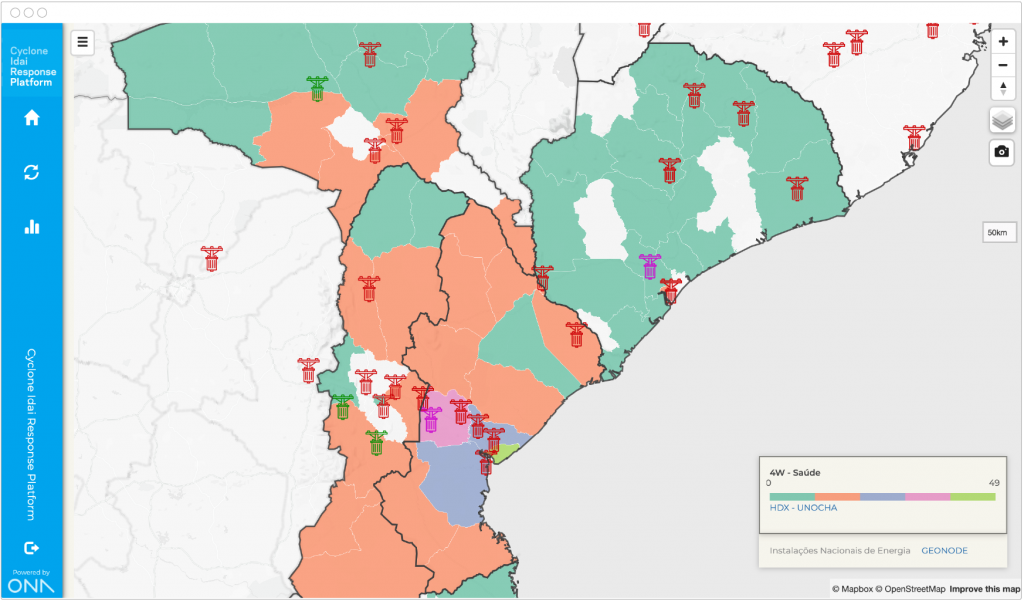
Infrastructure Service Mapping
Using the platform the team was able to map all key infrastructure services, including functional energy posts, water points, and other essential infrastructure, against where the flooding occurred.
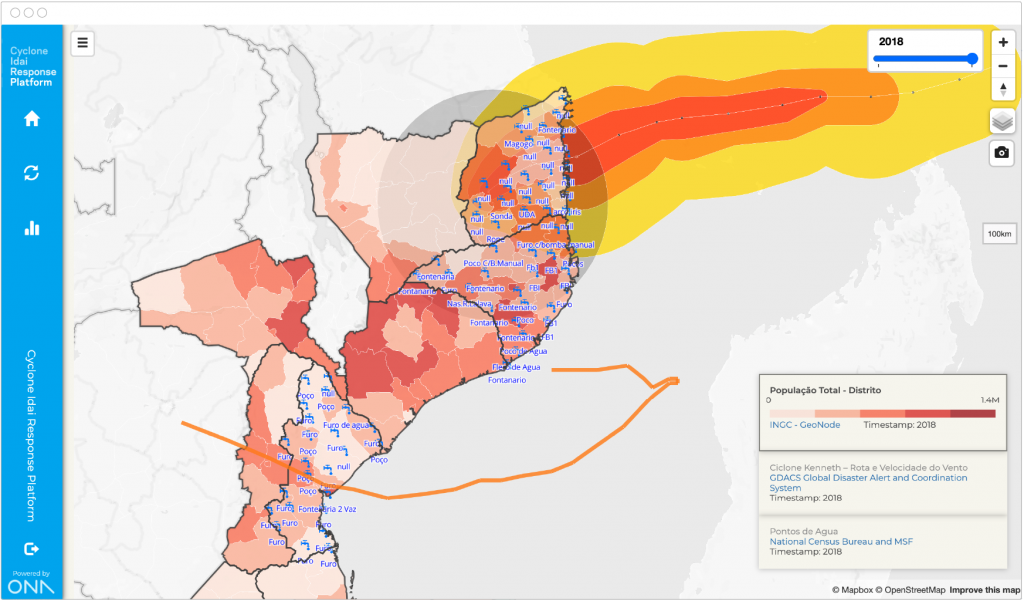
Population Mapping
The team was able to map population census data (gathered from the government) to help emergency response teams assess how many people were affected, and in which areas.
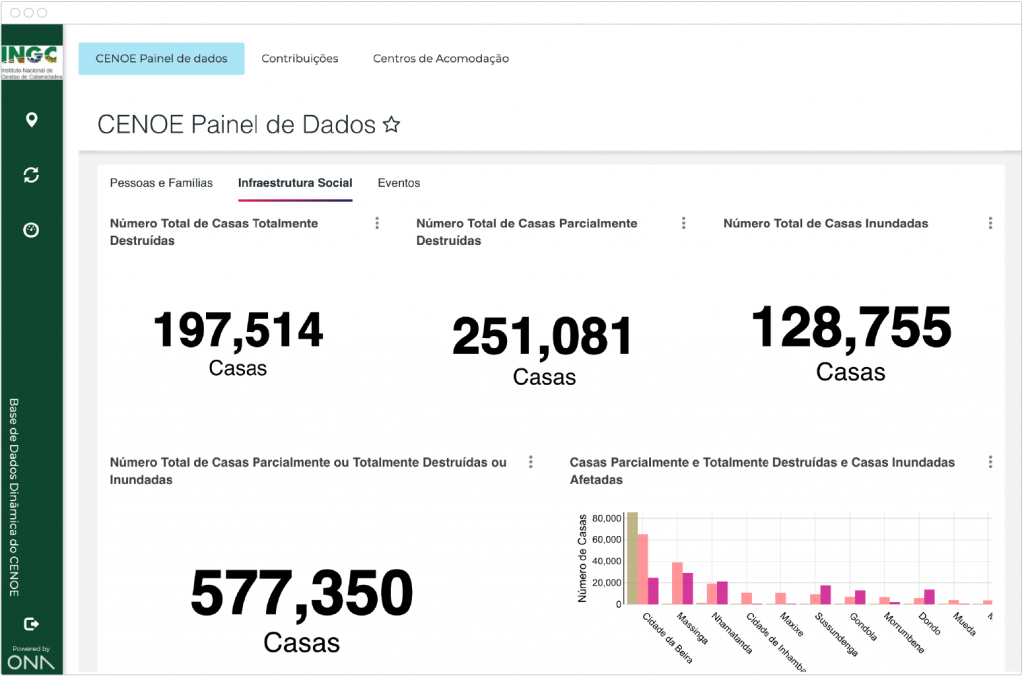
Rapid Assessments
Users of the platform were able to assess current road access conditions, and visualize data from rapid and aerial assessments (performed by OCHA and ICRC). The teams on the ground were using data pulled from these assessments and from OCHA’s Humanitarian Data Exchange through Canopy Analytics and visualized in real-time, easy to use dashboards and maps.
Ona’s Rapid Response platform — facilitated by an integrated set of Ona products and services — became the national platform for Cyclone Idai disaster relief.